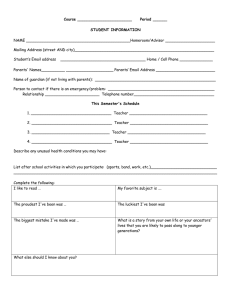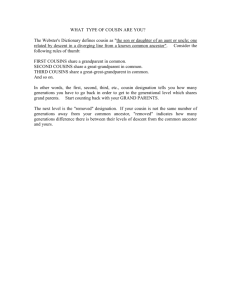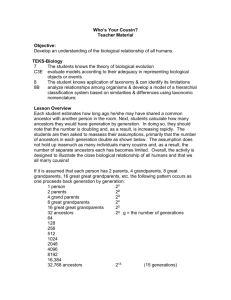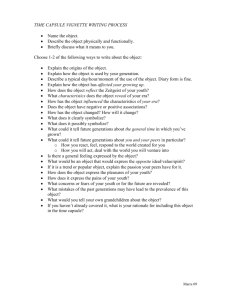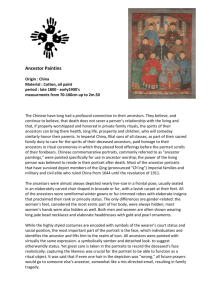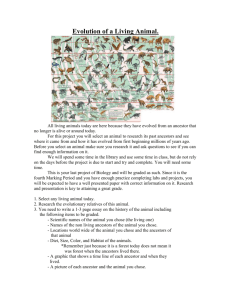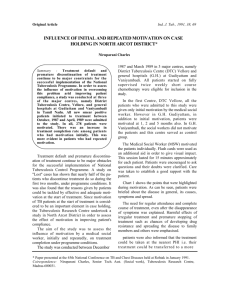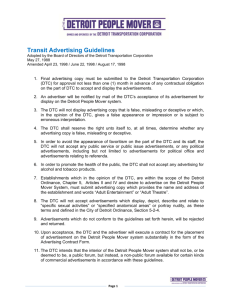Pedigrees in Natural Populations: Questions
advertisement
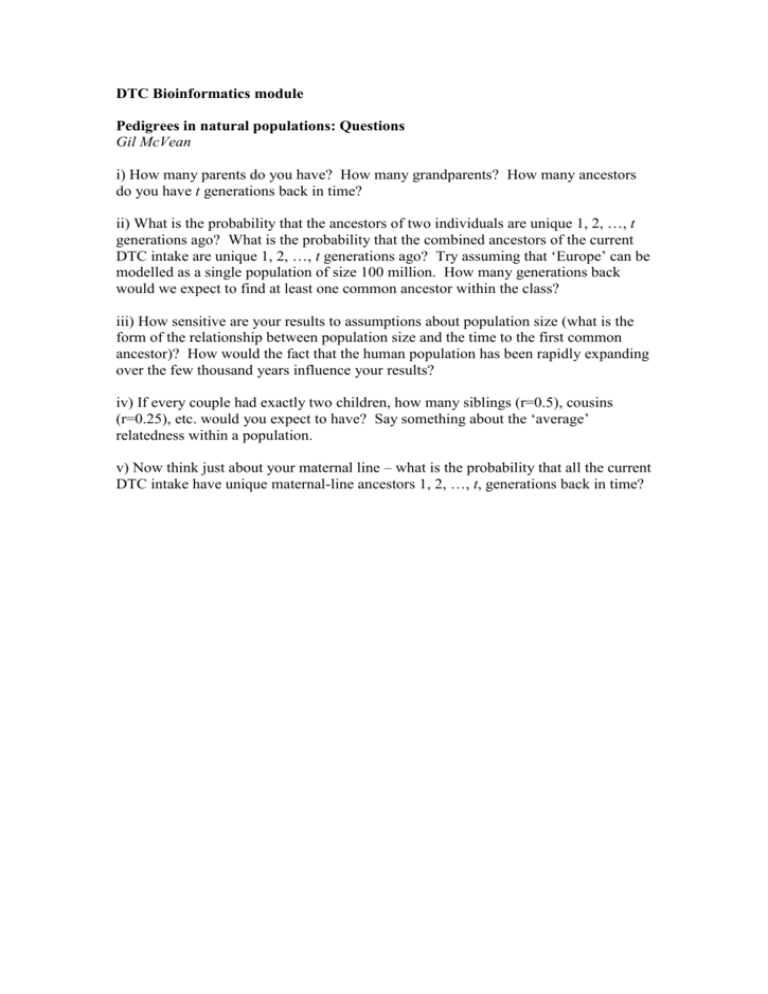
DTC Bioinformatics module Pedigrees in natural populations: Questions Gil McVean i) How many parents do you have? How many grandparents? How many ancestors do you have t generations back in time? ii) What is the probability that the ancestors of two individuals are unique 1, 2, …, t generations ago? What is the probability that the combined ancestors of the current DTC intake are unique 1, 2, …, t generations ago? Try assuming that ‘Europe’ can be modelled as a single population of size 100 million. How many generations back would we expect to find at least one common ancestor within the class? iii) How sensitive are your results to assumptions about population size (what is the form of the relationship between population size and the time to the first common ancestor)? How would the fact that the human population has been rapidly expanding over the few thousand years influence your results? iv) If every couple had exactly two children, how many siblings (r=0.5), cousins (r=0.25), etc. would you expect to have? Say something about the ‘average’ relatedness within a population. v) Now think just about your maternal line – what is the probability that all the current DTC intake have unique maternal-line ancestors 1, 2, …, t, generations back in time?
